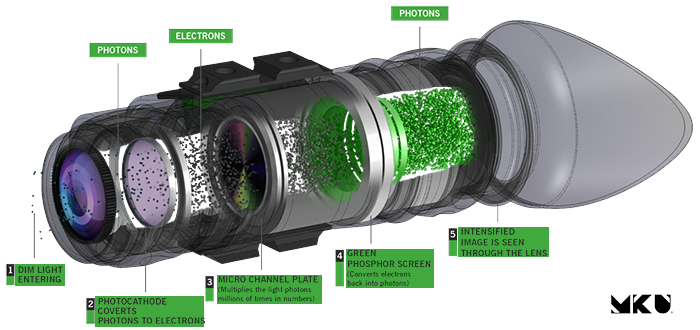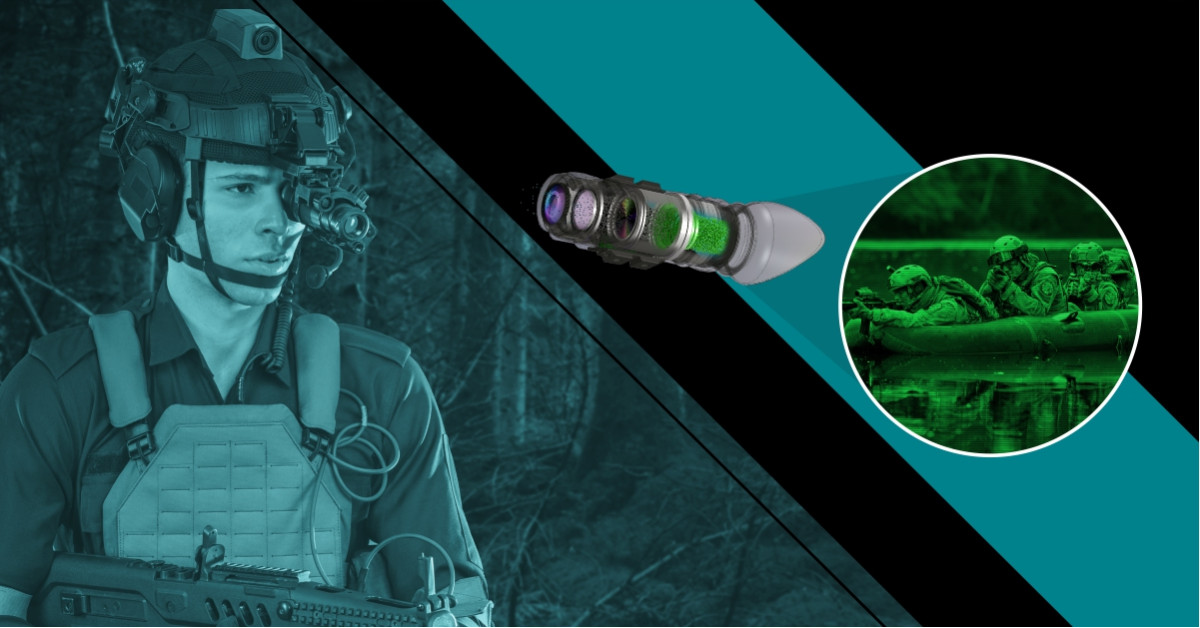From its first extensive use in military operations of
World War-2, to its present-day high-tech form, Night Vision Devices, commonly
known as NVDs have transformed the battlefield in more ways than one. Making
the term ‘under the cover of darkness’ absolutely redundant, NVDs have upped
the ante of combative capabilities by giving us a distinct edge over the enemy.
But, did ever wonder what enables this game-changing device to function? 
At the heart of an Night Vision Device lies a complex component in
the form of a vacuum tube called the ‘Image Intensifier’. Consisting of three
major parts, namely the Photo Cathode, the Micro Channel Plate and the Phosphor
Screen, the Image Intensifier uses light amplifying technology to give a
picture of the surroundings with minimal ambient light and helps identify a
target even in the darkest of surroundings.
The way it achieves this is by collecting all the photons
passing through the objective lens and converting them into electrons via a
photocathode. These electrons are then amplified through a thin disc containing
millions of closely spaced channels called the MCP. When the electrons pass
through the microplate and strike the channel walls, thousands of additional
electrons get released, and when these amplified electrons pass through a
phosphor screen they are converted back into photons, thus resulting in an
image that can easily be seen through the eyepiece lens.
Taking ‘light-bending to a whole new level, this
game-changing technology is extensively used for precisely locating the enemy
by the military, for navigation, surveillance and targeting, and also has
tremendous use in the industrial sector. If you feel intrigued by the science
and capabilities of night vision, stay tuned to this space to learn more about
this fascinating tool that is transforming the battlefields. Click here
to know more about the Technology of Night Vision Devices.


 LOGIN
LOGIN










